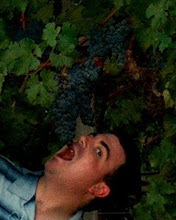
Chardonnay is tricky. It's a grape that really likes cool, coastal, foggy and windy climates. However, most of California's Chardonnay is not grown in this type of climate. Really, only the best ones are. This, of course, is my opinion, although there are some facts behind it.
For starters, if Chardonnay grows in cooler climates, it will retain a higher acid. As a result, when and if the wine goes through secondary malolactic fermentation the finished product does not taste like butter or have the texture of butter. For me, a buttery wine, especially one that tastes like butter, is not a good thing. I look for more of a creamy quality.
If you don't know, Malolactic fermentation is a process where malic acid (think green apple or salt and vinegar potato chips) that naturally occurs in the grapes is converted into lactic acid (think milk, cream or butter).
The higher acid of cool climate Chardonnay also adds to the age-ability of the wine. I know what you're thinking, "age a white wine?" If the conditions are right and the quality of wine is great, you can absolutely age a white wine for a significant time - sometimes 10 years or more.
The wine pictured below is a cool climate Chardonnay from the southern part of Sonoma, Los Carneros. During the growing season, Carneros has warm days, cool nights, plenty of fog and a wind that sometimes is very strong. All these weather conditions come together to make awesome Chardonnay grapes.
We paired this wine with some lemon pepper pasta (Trader Joe's) and homemade sourdough garlic bread. The acid in the wine worked perfectly with the lemon and olive oil from the pasta. The garlic gave it a little bite, but it was subdued by the butter on the bread.
So before you open that next bottle of Chardonnay, think about where it's from and what the weather is like there. Likely, the cooler the climate, the better the Chardonnay will be.
We'll finish tonight's blog with a picture of a vineyard in Carneros I took this morning....the mustard is out!
 Cheers!
Cheers!


No comments:
Post a Comment